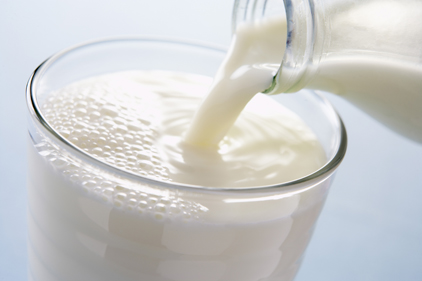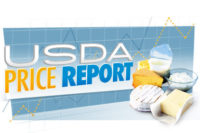Here is the Dairy Market News summary of milk and dairy products news:
- Cheese production steady, prices strong
- The week's wacky weather is affecting milk production
- Good news about butter is spread from coast to coast
- Demand improves for dry dairy products
Cheese production steady, prices strong
 Cheese prices across the country continue to show strength. Retail sales are reported as good. Cheese production continues to hold fairly steady with some marginal declines, due to declining milk production. At the current time, there have been few concerns expressed from cheese manufacturers about available volumes of milk for cheese. Production has been geared to build inventories in case of shorter milk supplies later in the summer. Buyers are showing increased interest as they hope to build their inventories. Increasing price levels are beginning to impact export sales.
Cheese prices across the country continue to show strength. Retail sales are reported as good. Cheese production continues to hold fairly steady with some marginal declines, due to declining milk production. At the current time, there have been few concerns expressed from cheese manufacturers about available volumes of milk for cheese. Production has been geared to build inventories in case of shorter milk supplies later in the summer. Buyers are showing increased interest as they hope to build their inventories. Increasing price levels are beginning to impact export sales.
The week's wacky weather is affecting milk production
Milk production trends across the country are being impacted by an array of factors ranging from nearly perfect conditions, tropical storm Debbie, too much moisture, not enough moisture, and hot, record setting, temperatures. All of these factors have occurred in various areas from coast to coast at varying rates during the past week causing milk production to be irregular for all Class needs.
Class I demand is picking up as bottlers prepare for typically heavier first of month needs and the upcoming midweek 4th of July holiday. With the holiday occurring at midweek, milk handlers are not quite sure as to how the milk flow will be managed. In many instances, Class I and II usage will ease at midweek, while Class III and IV usage will increase.
Some manufacturing facilities are scheduled to be shuttered all week, some down the early part of the week, while others will be down the later part of the holiday week. Cream markets are steady to firm. Class II demand continues to pull heavy volumes of cream into those operations, especially for ice cream and mix production.
Butter churns remain active, but are processing lighter volumes of available cream than a month ago. Some of the adverse weather patterns are causing milk volumes and butterfat levels to decline at a faster pace, thus cream volumes for full butter needs are declining.
Demand improves for dry dairy products
Most dry dairy product markets are steady to firm as milk production declines seasonally. Nonfat dry milk markets are firm and powder production varies from region to region. Many high heat producers are stating that demand is improving rapidly and often supplies are short of full needs. Due to good high heat demand, some drying schedules are being switched from low to high heat to address demand. Buttermilk powder markets are steady to firm. With market strength in both nonfat solids and butterfat solids values, manufacturers are often clearing dry buttermilk loads readily to spot and contract interests. Production of dry buttermilk has declined as increased demand for cream has pulled volumes away from churns. Whey powder markets and prices are steady to firm. Dry whey production is steady to lower based on declining milk supplies across the country. Whey protein concentrate prices are generally steady.
Good news about butter is spread from coast to coast
Butter demand is steady at generally good levels from coast to coast. Retail ads indicate that butter prices range from $1.49 in the Central part of the country to $3.99 per pound in the Northeast and Southeast with a national average of $2.48 per pound.
The U.S. Department of Agriculture prepares Dairy Market News. Read the full report for the week of June 25 to 29 here.

